Note: The following article contains major spoilers for The Outer Worlds and moderate spoilers for Fallout: New Vegas.

Obsidian Entertainment's Fallout: New Vegas is one of the greatest RPGs of all time. It doesn't just challenge you with defeating enemies but also working out who your enemies are. Its faction system is not just a set of spectrums along which to gain and lose points but is systemically necessary for a game that takes its conception of allies and opponents not just from the developer but also from the player. Given that precedent, it's not surprising that Obsidian's 2019 sci-fi, The Outer Worlds, also contains a faction system. What is surprising is that, unlike New Vegas, The Outer Worlds doesn't make these factions strict alternatives to each other and that that turns out to be the right choice for its messaging.
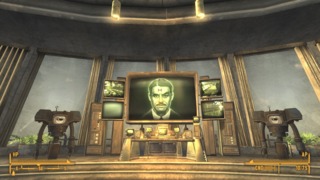
Other RPGs implementing factions typically have them be philosophically incompatible, each of them vying to order the world by their chosen ideology. In New Vegas, for example, you have the NCR, which wants to rule the Mojave as an expansionist democracy, roughly modelling itself on the 20th-century U.S., you have Caesar's Legion, which wants it to be a fascist patriarchy, and then there's Mr. House who wishes to continue his presidency over a consumerist monopoly.
The factions of The Outer Worlds also sell themselves as alternatives to each other, mainly because the majority are corporations jostling for a spot in the public consciousness. They all have their signature products, slogans, and labels. But as the protagonist, we're not just a consumer of those products; we exist on the frontlines of manufacturing and resource extraction, able to see the effects of the companies' decisions on the ground. And those decisions and their consequences are all basically the same. Every business wants to create the best-selling product for minimal cost at the expense of their workers and the wildlife. They are political clones of each other. There is disagreement over who should get to sell the most tat but not to the extent that they are going to war with each other.
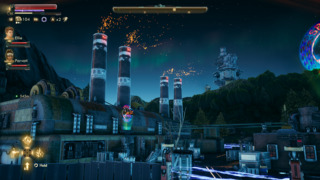
Wars are expensive, rebellion or outside regulation might not be impossible, and you can get more done by pooling resources. So, companies ally and maintain the rule of capitalism rather than divide and leave their industries vulnerable. Every company wants to sit on the throne of the market, but achieving that target means reaching a more fundamental goal: ensuring there's a market in the first place. Not that financiers always do what's rational, but it's why in competitive capitalism, economic interests still balkanise to form trade associations or international financial alliances. It's why the Consumer Goods Forum, the European Union, the World Economic Forum, and a whole bunch of other international entities exist.
In The Outer Worlds, it's the purpose of the Halcyon Holding Corporation Board. They're the free market equivalent of a state: something that organises all the economic power and intentions into a coherent structure and collective arsenal. There's a maximum to how adversarial one company can be to another when they're both entangled with The Board. Empires like the The Board's are inevitably tended by only the vastest corporate concerns because no one else has the capital to fund exploitation on an international or, in this case, interplantetary sprawl. Sometimes, a low droning horn in the soundtrack announces the arrival of this corporate royalty to the court.
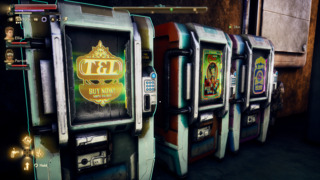
If you want to see how interchangeable the firms are, look at the banks of vending machines in every bar, office, and spaceport around the solar system of Halcyon. The world is so desperate to induce consumerism that these are the first amenities you see whenever you land your ship. Each one is transparently the same bulky metal receptacle, just with the products, graphics, and jingles changed out. All companies are running the same fundamental machinery, just with different key art slotted into the front panel. It's The Outer Worlds' harsh rejoinder to the right-libertarian koan that unregulated markets breed freedom. In a free market, you might be able to gobble up different sweets or get your vodka in a different bottle, but when it comes to your labour conditions and the organising principles of your town, you get one choice.
It's not that the colonies of Halcyon don't have different aesthetics, but the local flavour is down to the climate, ecology, and industry more than the fashion and lifestyles of these work camps. Halcyon's towns are demonstrative of how capitalism curbs individuality and genericises culture, at least for a lower class that has little culture external to consumerism to draw from. The lifestyle of the labourers is almost always defined by the round-the-clock work their occupation demands, their ability to style their furniture and clothing is clamped by their low wages, and they consume only the products that the same four companies that run everything make.
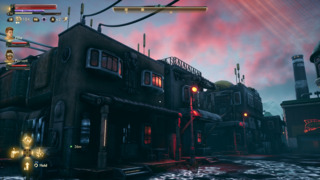
Sometimes their planet is swampy, and sometimes it's rocky. Sometimes the workers keep food on the table by gutting fish and other times by running a power plant, but as long as they live in the imperial rim, those differences do little to change their concrete existence. Take their architecture. They mostly live in an unadorned style of cubicle housing that is consistent between all the colonies because it was cheap to mass produce and fast to drop onto planets. In capitalism, there are cost-effective pre-fab homes you can build, and there are cost-effective pre-fab cultures.
Diagraming out the currents of wealth in the economy, Obsidian Entertainment makes a show of the material dragnets of empire. Every planet or region of a planet has a limit to the commodities it can generate, every community has a maximum amount of labour power to give, and who wants to do arduous labour? If you crave more material wealth, you could rely on charity, but charity can be hard to come by, and it's hard to get rich off of it; people only extend it to the needy. You can trade for items that your society might not have the labour, technological, or natural resources to produce, but without duress, traders will want something of equal value in return. Those last two ideas get tossed around in a lot of grand strategy games. You could steal from neighbours, and many societies historically have, but this is a one-and-done deal. You get the commodities you can plunder from your victim and nothing more. It's not sustainable for keeping up a lifestyle of luxury.

If you want to maintain a position of wealth privilege, you need to keep other communities consistently extracting the natural resources around them, processing them, and passing them or the profits from them onto you. To colonise a country, or in The Outer Worlds, a planet, is not to turn it into a treasure chest, but a factory. And imperialism is not just a way for the imperial core to import material goods from the empire; it's a pipeline that pulls affluence from the outer worlds to the inner worlds and exports poverty and hardship from the inner worlds to the outer worlds.
In Obsidian's RPG, the Halcyon capital of Byzantium is the inner world. The imperial trade-off has blessed them with the tightest material security imaginable, but emotionally, it's made them a quivering mess. To achieve a state of utopia, they cut themselves off from the outside world with high walls, and they naturally disrespect the working class they exploit. So, they've taken to making up ridiculous stories of what life is like beyond the wall, so coddled that they imagine labourers as a braindead mob that might infect them with their uncouthness. In their city, there is an orrery of Halcyon. The rich have shrunk the worlds down so small that they practically fit in the palm of their hand, and yet, Byzantium's reductionist model of the system lacks the detail it would need to properly represent it. The wealthy's successful attempt to isolate themselves from all but their peers has turned most of humanity into an unknown to them, and that ignorance breeds fear.
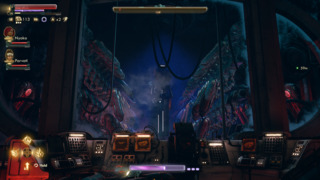
Your ultimate mission in The Outer Worlds is to revive the frozen crew of the spaceship Hope, which was intended to be half of the original settlers of Halcyon. They could provide an alternative workforce to the one held captive by The Board that could purge corruption and greed in the system. The scientist working on this project, Phineas Welles, comments that The Hope crew are valuable not just because of their labour power and expertise but also because they hold a worldview untainted by life under The Board.
The game could do with more of the mindset from The Hope because it dehumanises many of its characters with the same coldness the Byzantines do. It hovers behind plenty of the poor, making devil horns with its fingers. Action games (that is, action in the sense of action films) need enemies: targets you can attack to achieve a success state and who, if you don't dispatch properly, will kill you, resulting in a loss state. The play must also feel fair and keep the pace up, so the enemies need to be quickly identifiable. Therefore, these games tend to hone in on this paradigm where there's a visibly subhuman outsider group only capable of violence which you have free reign to murder and perhaps loot the bodies of.
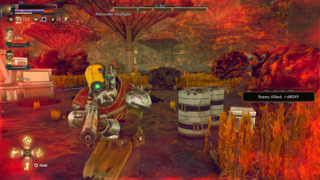
Even when that outsider group is fictionalised as zombies or orcs, the symbolism means these games recycle chauvinistic tropes about savage and inferior demographics, perhaps even indigenous people, that it's moral to eradicate and steal from. But the metaphor practically ceases to be a metaphor when you world-build as Obsidian does and make some of the enemies raiders who live external to towns or cities. The RPG is playing both sides of the court. It satirises the colonialist upper crust, who demonise everyone outside their economic bastion and view them as a resource piñata to be beaten open. At the same time, it imagines almost everyone not serving a colony is a monster and views them as a resource piñata to be beaten open.
For what it's worth, it is possible to found an anti-corporate community in this universe. The Iconoclasts are an enemy of private capital on the planet Monarch. Unlike the revolutionary factions in a lot of fiction, the Iconoclasts are not just generic anti-authoritarians. It can be difficult to pin down exactly what they believe, but at the time you find them, they're living a roughly collectivist existence. Their politics are fleshed out through a power struggle that asks you to choose between two leaders. Standing on one side of you, you have a diplomatic leader who prioritises promoting ideology over fulfilling his community's physical needs. On the other side, you've got a militant commander who keeps the pantry well-stocked, even if the printing presses gather dust.
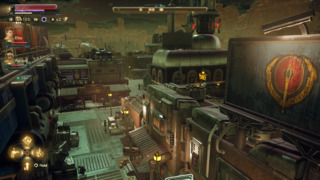
The Iconoclasts are looking to overthrow Monarch Stellar Industries, the stewards of Stellar Bay: the one bustling town on the planet. Monarch Stellar Industries (MSI) is interesting. It is not one of the highly influential factions in this story but is trying to get promoted to one. Monarch was the original site of The Board's colonisation attempts in Halcyon, but after a bungled terraforming of its scorching deserts, they quickly pulled out and placed the planet under embargo. Through Monarch's story, The Outer Worlds treats successful terraforming as synonymous with successful colonisation, establishing a potential link between terraforming and colonialism. Colonists arrive on a shore and, rather than leaving the environment as they find it, quickly get to work reorganising natural and humanmade landscapes to be fertile for the economics of imperialism. It's a fairly conspicuous evil. Yet, we rarely question what it might mean to take a planet with its own ecosystem and reform it in the image of the planet where the capital resides: Terra, Earth.
MSI CEO Sandar Nanji espouses a concern for the residents of Stellar Bay, victims of the failed colonisation. Still, he is also trying to springboard his company onto The Board, to audition for the exploitation of imperialism. Throughout the campaign, Obsidian unpacks why people might volunteer for back-breaking dirt farming for a corporate demigod. The theme comes starkly into focus through the mounting tension between the Iconoclasts and Nanji's firm. Yeah, The Board are out to extract the maximum profit from you with no regard for human life, but that is where the work is. The corporations have had their claws in the colonists for so long that, as in our world, "salary" means survival to them. Meanwhile, as an anti-capitalist organisation, the Iconoclasts are unfamiliar to plenty of workers, and their future is uncertain. This particular collective has unstable leadership, and there are Monarchists who'd prefer the devil they know over the angel they don't.
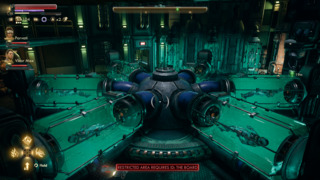
Yet, for any player who agrees that siding with The Board is the pragmatic choice, there's the second-act twist in which we discover that the corporations have a plan to cryogenically freeze all the Halcyon colonists. The bourgeoisie's best-kept secret is that they know that agriculture in Halcyon has depleted the soil of its nutrients, rendering it unable to support plants. There's an imminent crop collapse coming. The Board's contingency plan is to kill everyone currently in suspended animation and freeze down the Halcyon labourers like hamburger meat. They will keep the Byzantines and a skeleton crew animated.
Research into sustainable farming practices is ongoing, but in the meantime, most food would be reserved for the rich. Assuming they can ride out the crisis, the rest of the colonists would be thawed in the future through a method not yet proven to be safe. And not only is The Outer Worlds' conception of a system full of brutal resource extraction not part of its fiction, neither is the idea that humanity is going to be dealing with the effects of soil degradation and cropcollapse in the near future. That is, provided we don't change course.
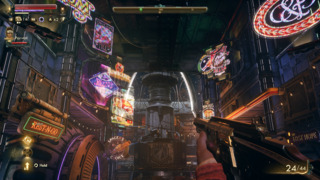
If the initial impression The Outer Worlds gives you of imperialism is hellish, it's saying that's the system on a good day. The culture is stultifying, the work is relentless, and the choices are false, but even that status quo is maintained by a relative abundance of resources and labour opportunities. If you take up too many resources for the labour you produce or if the material basis for your work drops away, perhaps because of an economic downturn or ecological crisis, you become surplus to requirements. If there are fewer commodities being produced overall, it won't be the corporations who choose to sacrifice; they're going to pass that deficit down the line onto an already burdened lower class.
A balance of power that you might be able to endure one day can become intolerable the next. Thanks for reading.
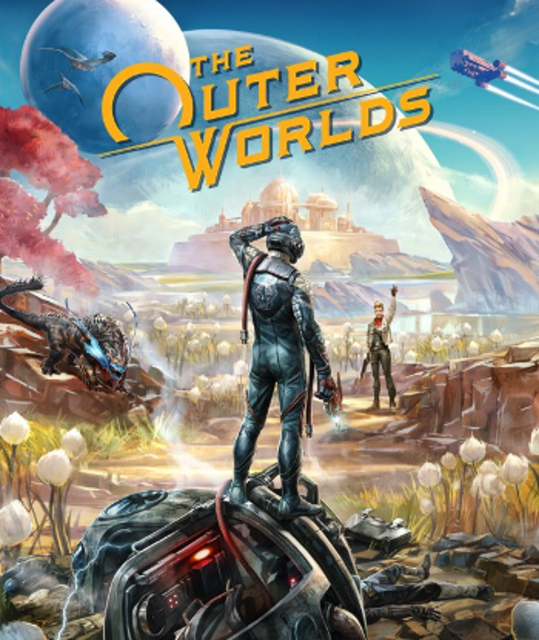
Log in to comment